What does a NASCAR pit crew do on a typical day? Behind the scenes with the athletes
Like most NASCAR pit crew members, Matt Simmons always wanted to be an athlete.
Including Super Bowl champions, most of the men on the NASCAR teams who hop over the pit road walls each Sunday come from backgrounds in other sports. These athletes are regularly training and watching film — fulfilling the experience of competing for a team — and bring a particularly competitive mindset to the track and shops every week.
Simmons, a former all-state baseball player at Charlotte Christian, is the tire carrier on the Trackhouse Racing pit crew of Ross Chastain. He’s the son of Greg Simmons, the late 16-time state champion Knights’ coach.
He got a call from Mike Metcalf, a Charlotte Christian alum who played football at Appalachian State, during his senior year at Gardner-Webb University. A football and basketball player-turned-gasman, Metcalf encouraged him to check out the pits after his baseball career.
Simmons’ grandfather was a race fan, and his father liked the sport as well. Still, as is initially the case with many, he hadn’t watched a whole lot of races. He’d been to the Coca-Cola 600 just once as a little kid — when, his mother says, he fell asleep after 200 laps.
Simmons hoped to stay in sports, but didn’t necessarily want to go into coaching like his father and other family members. He watched pit practice and participated in a workout during his first time at a race shop — and knew it was an activity he could see himself doing.
“That’s what I’ve loved about this sport: No matter what background you come from, if you’re a good person, a good teammate, a good dude and you work hard, someone’s going to take you under their wing,” Simmons said. “Someone’s going to have your back and help you be successful.
“Whether you’re the football player at Alabama who won four national championships, or a guy who barely made the baseball team at Gardner-Webb University.”
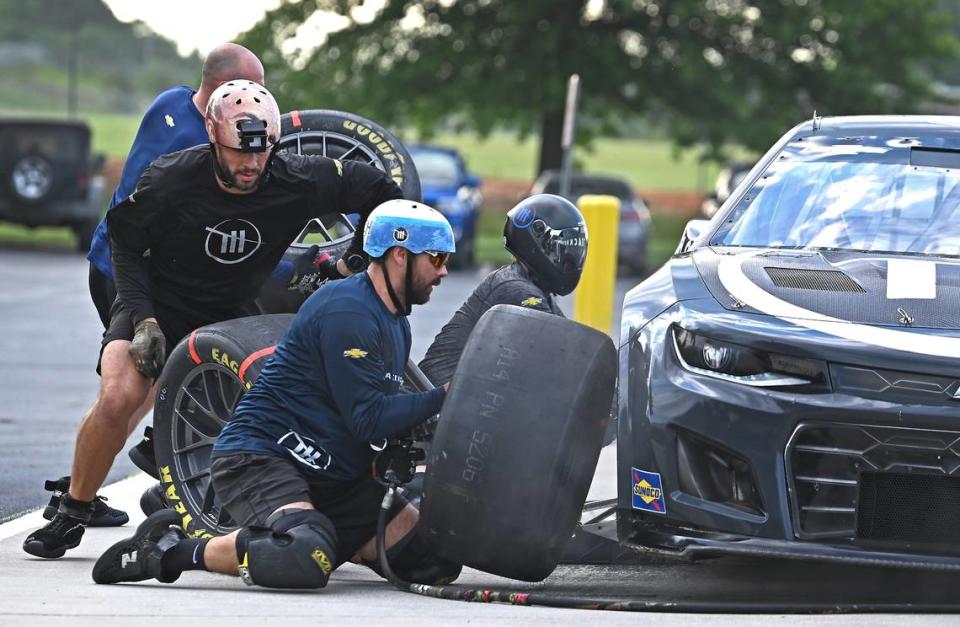
What happens during a four-tire NASCAR pit stop?
Clutching a couple of Goodyear tires, Simmons, along with the jackman and tire changers, hustle to the other side of the car as it arrives.
Michael Roberts, a Hendersonville, N.C., native and former baseball player at Catawba Valley Community College, removes the singular lugnut to take off the front wheel. Ken Pozega, previously a safety on his high school football team in Ohio, unfastens the rear tire simultaneously. Both wheels on one side are off within a split-second of the car stopping.
Simmons gives one of the new tires to jackman Shane Wilson, who fastens the lugnut onto the front wheel after lifting the car with a 35-pound jack. Simmons screws on the back tire as Pozega gets the old one off, and they hurry back to the other side.
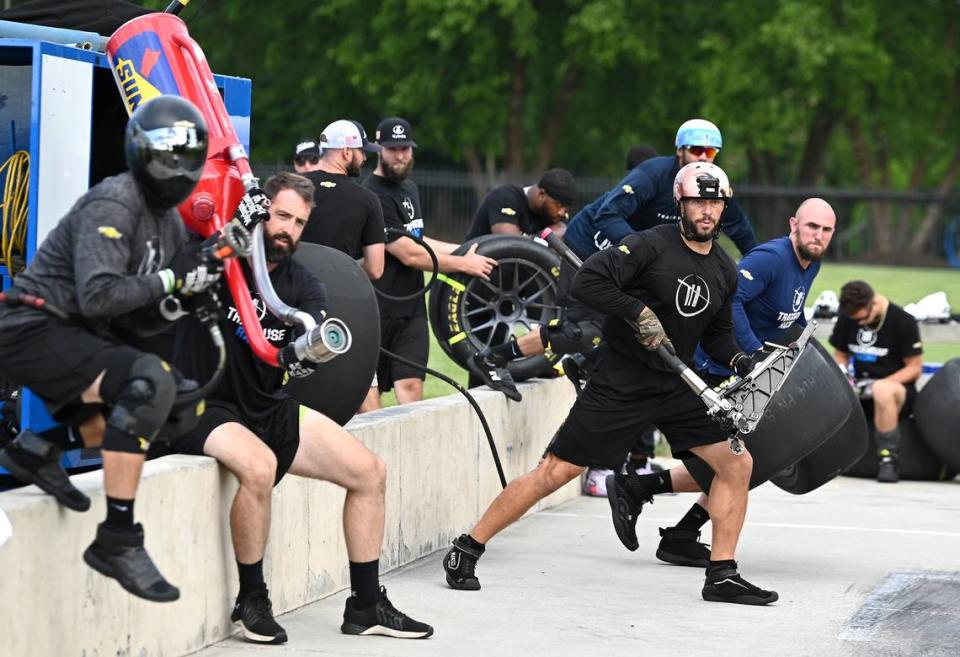
Brook Davenport, a former offensive lineman at Catholic University, stays on the side of the car closest to the pit road walls fueling the car with a can of Sunoco gasoline. The tire changers hasten back over to the near side, grab the final two tires from over the wall and secure them onto the car.
“The time is less than 10 seconds, which is really similar to a football play,” Davenport said. “The only difference is you have a ton of time between pit stops, like 30 to 40 minutes, whereas in football, there are 25 seconds on the clock.
“A lot of high endurance strength stuff, and training-wise, it really does encompass the same aspects as the football field.”

‘That locker room feeling that you miss’
Every morning at around 7:30 a.m., pit crew members start arriving at their race shop.
A pace car making the same noise as a Chevrolet Camaro heading down pit road on a Sunday is gliding toward team members by the top of the hour. Wearing athletic shorts and T-shirts, they dash in front of the car holding tires and drill lugnuts onto axles.
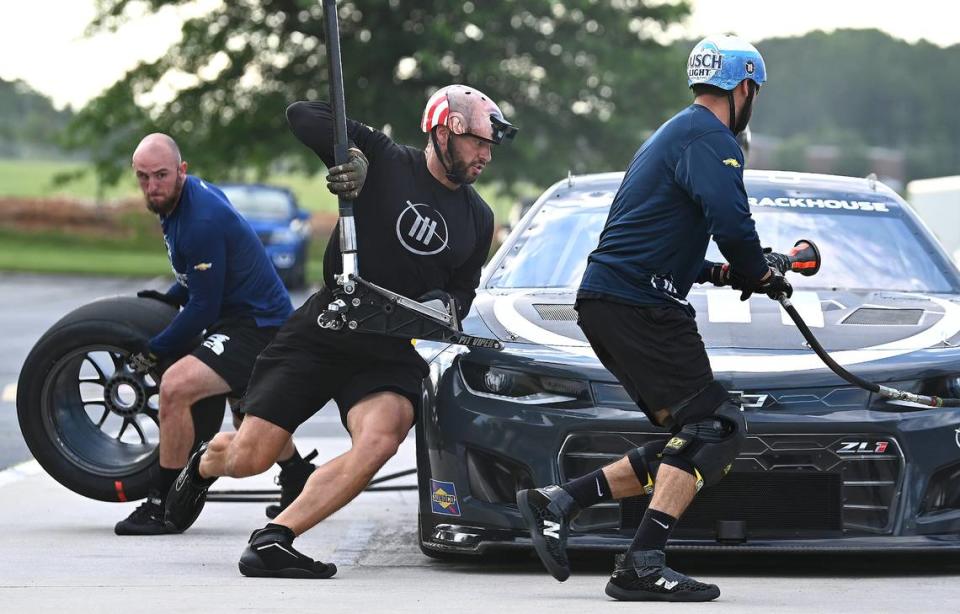
There’s a camera positioned atop a pole that oversees this practice area, and the team members congregate in front of a television screen on a pit box following each pit stop and replay their tape.
The teams head inside for a film session after roughly an hour of pit practice. All six of Chastain’s crew members sit alongside each other before two television screens, with crew chief Phil Surgen in the middle.
Surgen drags video clips from every angle of each pit stop in the previous week’s Cup Series race onto a timeline in Adobe Premiere Pro. They have the high angle like they see in their practices outside, along with having cameras from different positions around the pit stall.
They discuss ways to cut down time and break down their pit stops from that prior race. Eventually, they look at pictures of the upcoming race track, finding different images online that show exactly how sharp the turns may be coming onto curved pit roads, for example.
“It’s fun to go out here, hang out with the guys — it’s just that locker room feeling that you just miss when you’re done playing sports,” Pozega said. “Coming to NASCAR has just been awesome.”
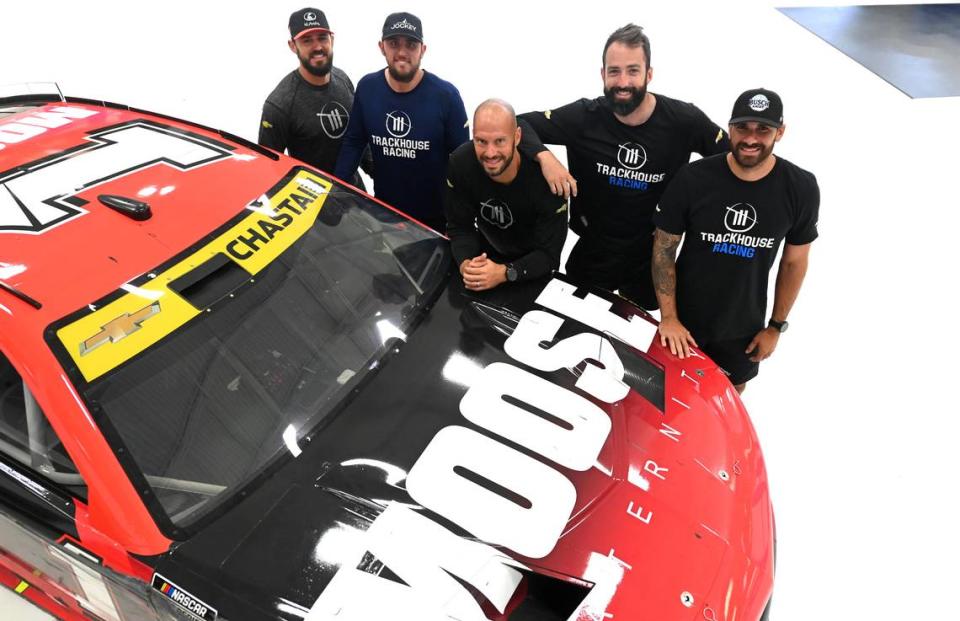
Still competing for a sports team
After about an hour in the meeting, the teams hit the gym for a workout.
Trackhouse pit crews venture about a mile from their shop to Vitality Fitness in Concord, where all the team members are putting up power cleans, sailing through the air for box and broad jumps, hitting the leg press and much more. A detailed lifting program for each day is spelled out on TV screens.
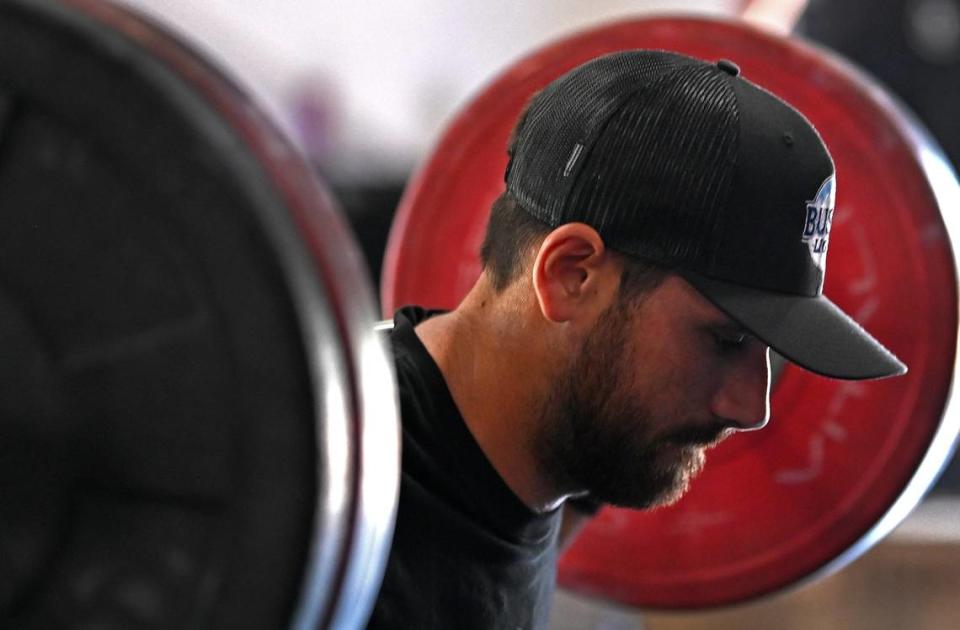
Some of the Trackhouse athletes decide to jog that trip around the corner instead of getting in a car. They all work out inside a big, open room together, rotating in different areas of the gym in groups.
By around noon, most of the team members are back at the race shop hanging out with each other some more. They’re back at the shop training again the following morning, one step closer to their next race.
For Simmons, it’s been meaningful to become a professional athlete in the area in which he grew up.
Coming from a family closely involved with sports, it’s been special for him to find a new community within his hometown that’s been so supportive to him.
“Charlotte has done a lot for my family,” Simmons said. “My dad devoted 30-something years of his life to that school. I grew up in the Charlotte area, my mom and my brother still live down there, so I’m still down there a lot. That city means a lot.
“I enjoy being in a different sport. Dad’s had plenty of guys who have gone on to play professional baseball and professional football, some of them, so it’s cool for Dad’s son to be in NASCAR.”

 Yahoo Sports
Yahoo Sports 